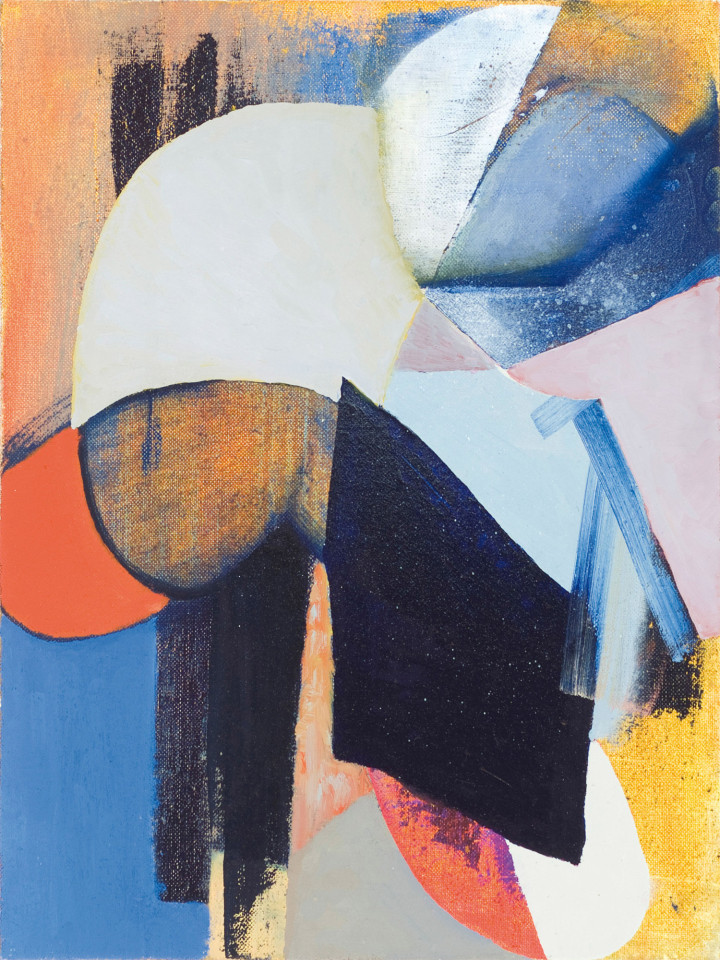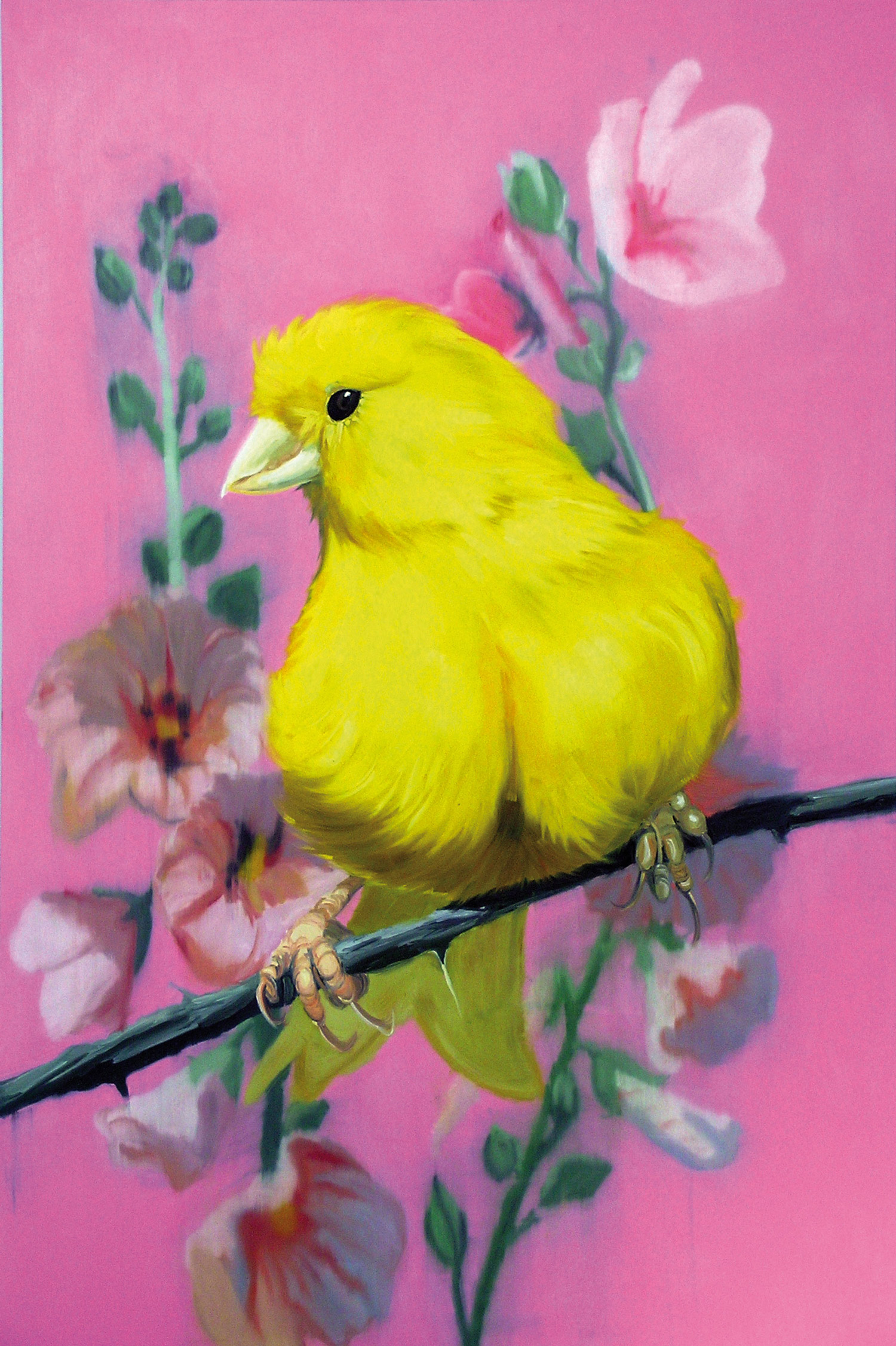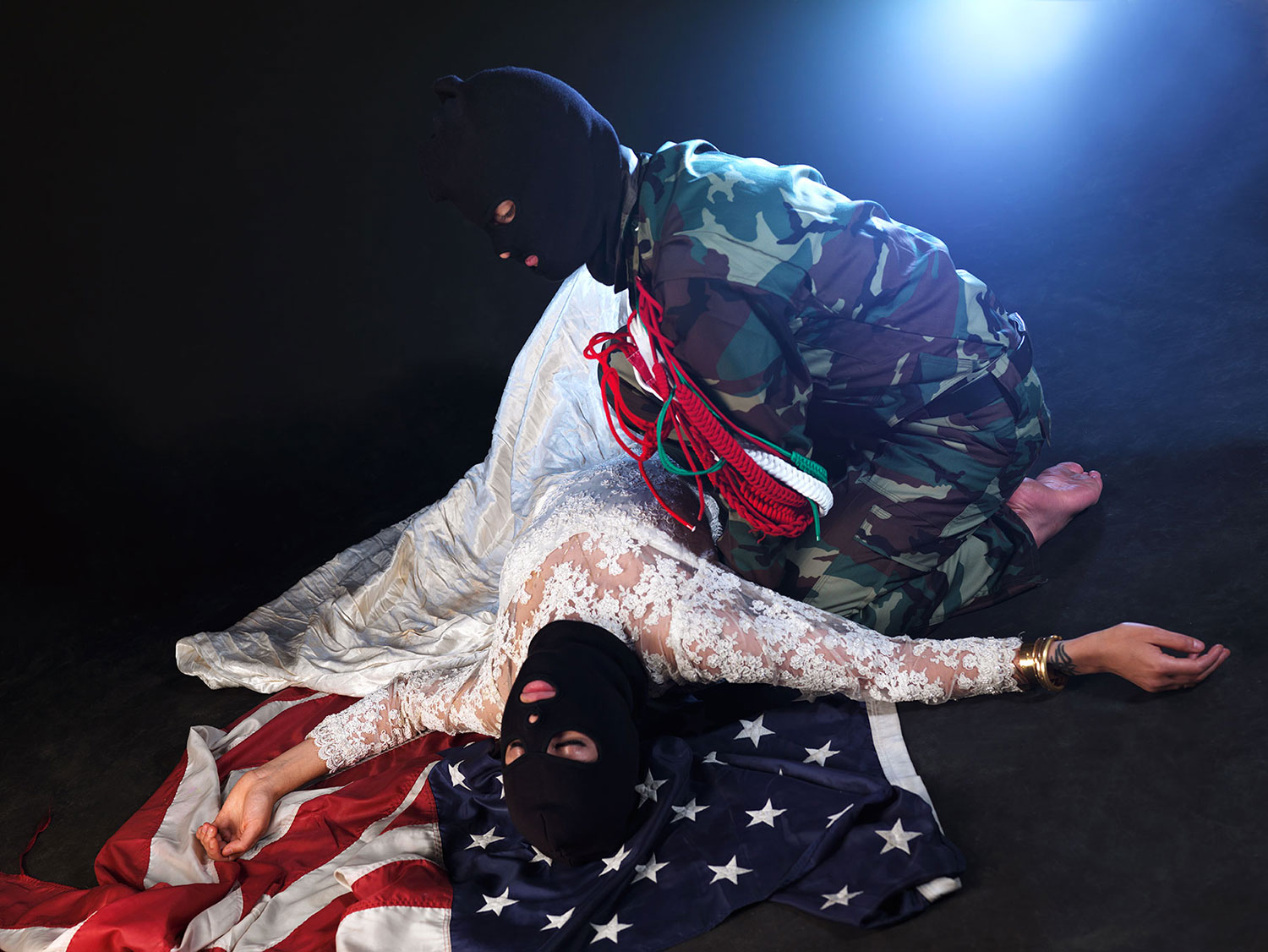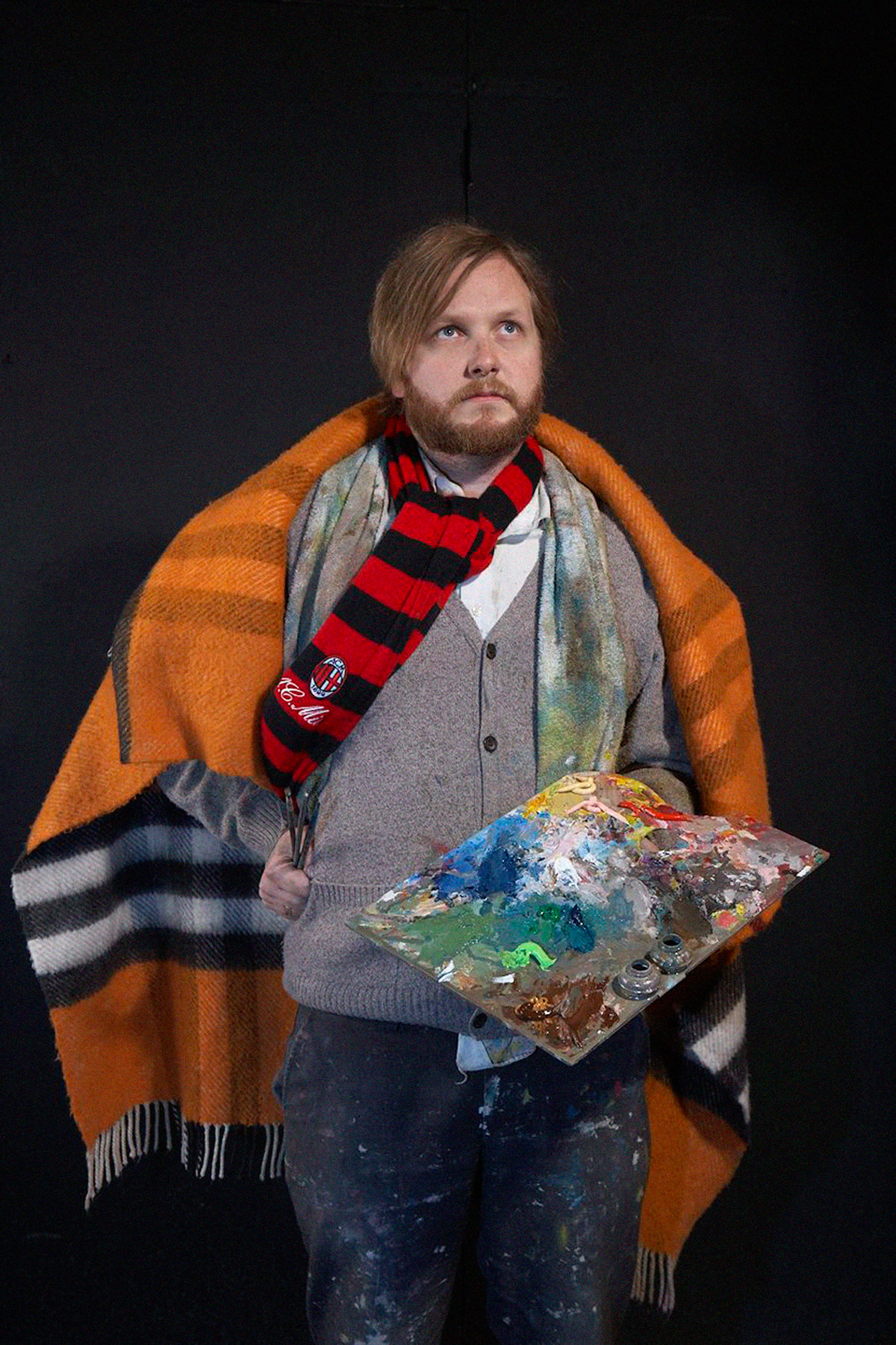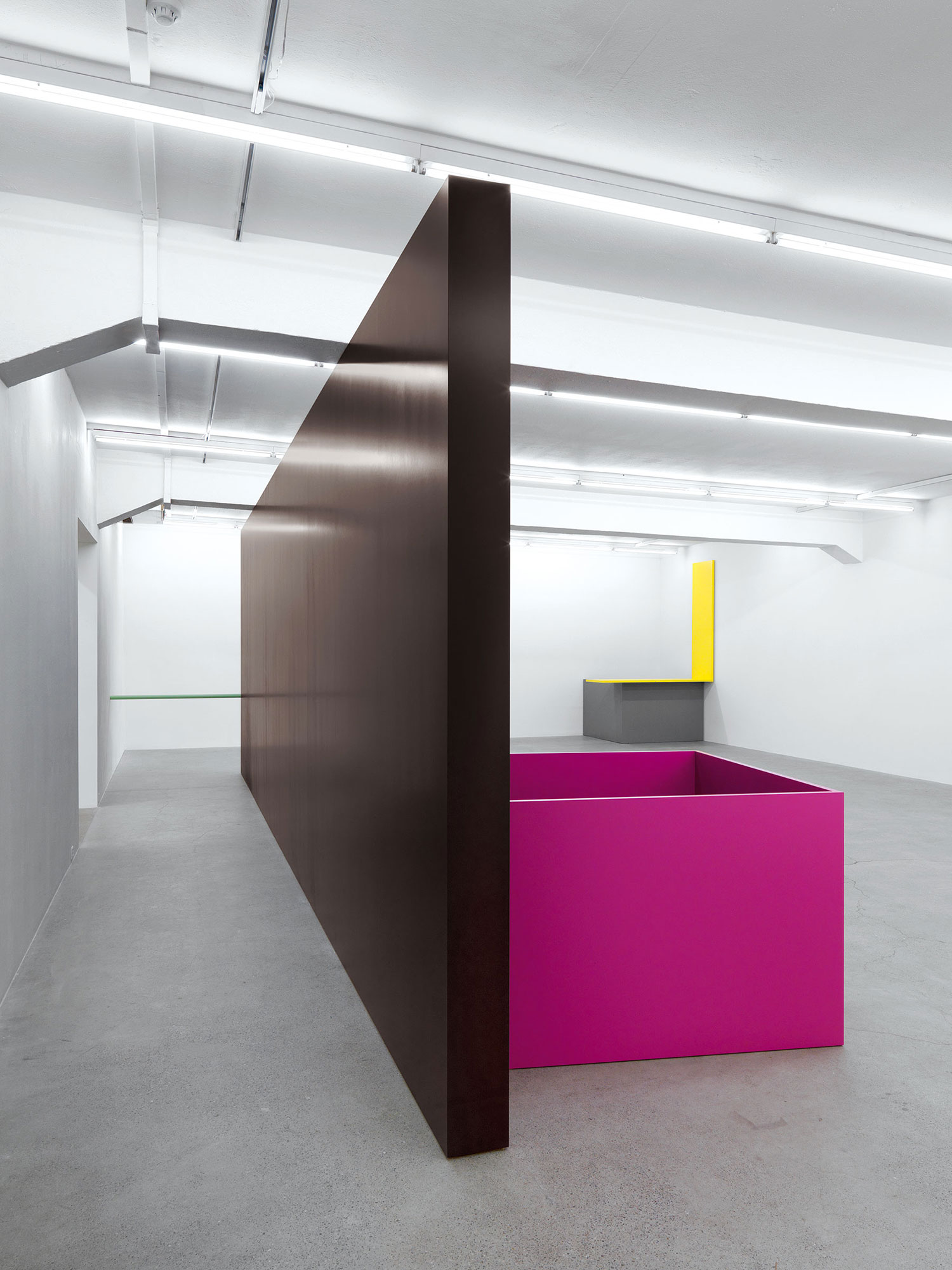
John McKinnon: While abstract, your paintings do not conform to one style. Can you describe your approach to a single canvas?
Molly Zuckerman-Hartung: Each painting has its own specific logic, created through a series of material-related questions with metaphysical implications. Is it too heavy? Does it need more paint? Once I tied a brick to a painting. The apparent dissimilarity between works reflects the underlying anxieties of overproduction. The paintings are the haunted unconscious of routine capitalism. I cultivate the conflict between my desire for meaning (which necessitates repetition) and the injunction to make it new.
JM: So, is no portion of a painting more important than another? Is it about the entire painting and the experience of it?
MZ-H: There is no focal point, but I strive for a disjunctive syntax: ugly but moving, or this yet that. I’m not aiming for a modernist gestalt, nor for the postmodernity of Fiona Rae — a painter who places differing visual languages in proximity, to underscore their irreconcilability. By contrast, my paintings assert an ambivalent subjectivity — a conflicted whole.
JM: Do you intend to give an attractive quality to the work?
MZ-H: I want the paintings to look good. But my notion of beautiful is shifting all the time, due to fashion, taste, what I am reading. I seem unable to cease defying the dictate that ‘less is more.’ But much of the work I admire is quite minimal.

JM: This shifting of taste seems to be reflected within our device-based culture. We are constantly channel-surfing or shuffling our iPods. Do you intend to elicit responses like this from your paintings?
MZ-H: I keep my studio walls as porous as I can. A few years ago, I made paintings with horizontal bands intended to be read as text. I was dealing with speed (reading), but a painting by Matisse at the Art Institute of Chicago called Woman Before an Aquarium began to seduce me. Increasingly, I’d like my paintings to captivate a viewer in a constricted rêverie in order to engage the anxieties behind channel-surfing. Think of Freud’s formulation of mania and melancholia.
JM: Your layers of paint seem to hang in a balance between thin and dense painterly information. How is this created within the studio? And when do you know that a painting is finished?
MZ-H: For me, painting means queering and compressing a subjective history of painting (a lineage of interiors including Vermeer, Matisse, Klee.) In the studio I move between the need for clarity and a desire to reveal the density of my process, which is self-critical and dialectical, not organic. I am influenced by the late novels of Henry James, where consciousness generates claustrophobic time-space. In this heavy atmosphere, characters attempt to act. Studio time is analogous, with intervals of slow accumulation punctuated by action.

